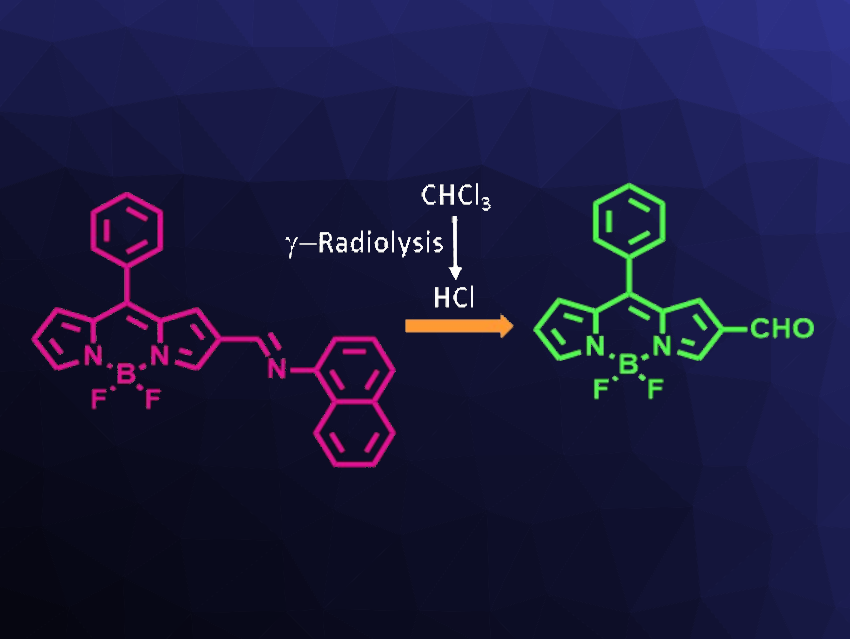Gamma radiation is often used in radio-diagnosis and therapy, as well as blood irradiation. Precise dose delivery (0.01 Gy resolution) is required for diagnostic and therapeutic purposes. For blood irradiation before transfusion to, e.g., cancer patients, a minimum dose of 25 Gy is required to avoid graft versus host disease. Known γ-detectors and dosimeters often have drawbacks such as low dose sensitivity, complicated read-out procedures, or high costs. Thus, the development of cost-effective and highly sensitive γ-dosimeters—in particular, for medical applications—would be useful.
Soumyaditya Mula, Bhabha Atomic Research Centre and Homi Bhabha National Institute, Mumbai, India, and colleagues have developed a highly sensitive fluorescent γ-dosimeter based on an imino-BODIPY dye (pictured). In CHCl3, the dye shows colorimetric (from reddish brown to yellow) and fluorometric changes (from non-fluorescent to greenish fluorescent) upon γ-radiation exposure. These changes are caused by a reaction with HCl, which is generated in situ by the radiolysis of CHCl3.
The γ-dosimeter shows a tunable dynamic range based on the dye concentration. According to the researchers, it has the lowest limit of detection (LOD) reported so far for gamma dosimeters based on any analytical method (0.001 Gy). Thus, it is suitable for γ-dose measurements in radio-diagnosis and therapy. The dosimeter is also useful to measure the absorbed dose in blood irradiation.
- Imino‐BODIPY‐Based, Highly Sensitive, Fluorescent Dosimeter for Low‐Dose Gamma Radiation,
Manoj K. Choudhary, Sudip Gorai, Birija S. Patro, Soumyaditya Mula,
ChemPhotoChem 2023.
https://doi.org/10.1002/cptc.202300245




